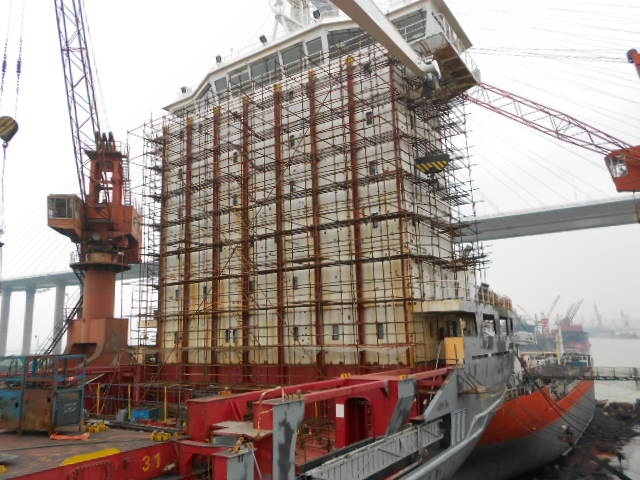
Performing the published Rules, the classification process includes:
- A technical analysis of the design plans & related records for the new ship to check compliance with the relevant Rules;
- Presence at the building of the ship in the shipyard by the Classification Society surveyor to check that the ship is constructed in compliance with the accepted design plans & classification Rules;
- Visit by the Classification Society surveyor at the related production facilities that furnish key parts such as the steel, engine, generators & castings to check that the parts obeys to the applicable Rule conditions;
- Visit by the Classification Society surveyor at the sea trials & other trials linked to the ship & its appliances prior to delivery to check comply with the applicable Rule conditions; SAFER AND CLEANER SHIPPING
- Upon sufficient completion of the above, the shipowners apply for the issuance of a class certificate will be believed by the applicable Classification Society & , if deemed fit, the allocation of the class may be accepted & a certificate of classification given;
- Once in service, the owner must surrender the ship to the clearly defined programme of periodical class surveys, performed on board the vessel, to check that the ship able to meet the relevant Rule conditions for extension of the class.
Class Rules do not includes every piece of structure or item of appliances on board the ship, nor do they include operational parts. Tasks which normally fall outward the scope of classification covers such items as: design & manufacturing processes; selection of type & power of machinery & certain appliances(e.g. winches); number & qualification of crew operating personnel; form & cargo carrying extent of the ship & manoeuvring performance; hull vibrations; spare parts; life-saving appliances & maintenance appliances. These matters may be given concern for the classification complying to the type of ship or class notation allocated.
It should be highlighted that it is the shipowner who has the overall duty for the safety & integrity of the ship, covering the way in which it is operated & kept. The benefit of classification rely upon the shipbuilder, during construction, & the shipowner.
once the ship enters service, collaborating with the Class Society in an open & transparent way on all problems which may alter its class status. For the shipowner, this specially needs acting in good faith by revealing to the Class Society any damage that may alter the ship’s classification status. If there is the least question, the owner should inform class & plan a survey to find if the ship is in compliance with the applicable class standard.
A Class surveyor may only go on board a ship once in a 12 month period. At that time it is not possible that the surveyor check the complete structure of the ship or its machinery. The survey covers a sampling, for which recommendations present depends upon factual experience & the age of the ship which may point out those parts of the ship or its machinery that may be subjected to corrosion, or are vulnerable to the highest incidence of stress, or may be likely to show signs of damage.
It is the owner‘s duty to satisfactorily keep the ship in the period between surveys. It is the responsibility of the owner, or its officer, to notify the Society of any events that may disturb the continued compliance of the ship with the Society‘s Rules. Where the requirement for the maintenance of class are not followed with, class may be suspended, withdrawn to a different notation, as deemed suitable by the society when it becomes concerned of the condition.



